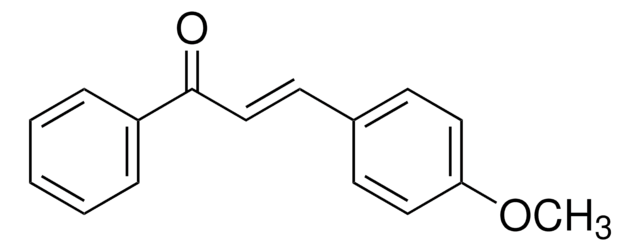1.60309
Sodium hydroxide solution
c(NaOH) =0.01 mol/l (0.01 N), Titripur®, Reag. USP
Synonyme(s) :
Sodium hydroxide solution
About This Item
Produits recommandés
Nom du produit
Hydroxyde de sodium solution, 0.01 M NaOH (0.01 N), Titripur®, reag. USP
Agence
reag. USP
Niveau de qualité
Pression de vapeur
3 mmHg ( 37 °C)
Gamme de produits
Titripur®
Forme
liquid
Qualité
Analyzed in our ISO 17025 accredited QC lab
Capacité de réaction
reaction type: Acid-base reactions
Conditionnement
Titripac® of
Concentration
0.01 M NaOH (0.01 N)
Technique(s)
titration: suitable
Température de stockage
15-25°C
Chaîne SMILES
[OH-].[Na+]
InChI
1S/Na.H2O/h;1H2/q+1;/p-1
Clé InChI
HEMHJVSKTPXQMS-UHFFFAOYSA-M
Vous recherchez des produits similaires ? Visite Guide de comparaison des produits
Catégories apparentées
Application
- Improvement of durability and drying shrinkage of sodium carbonate activated slag through the incorporation of calcium hydroxide and sodium hydroxide.: This study investigates the effects of incorporating sodium hydroxide and calcium hydroxide into sodium carbonate activated slag. The results show significant improvements in the durability and drying shrinkage properties of the material, making it a viable option for construction applications where enhanced performance is required (Construction and Building Materials, 2020).
- Effect of Sodium Silicate to Hydroxide Ratio and Sodium Hydroxide Concentration on the Physico-Mechanical Properties of Geopolymer Binders.: This study investigates the influence of the sodium silicate to sodium hydroxide ratio and the concentration of sodium hydroxide on the mechanical properties of metakaolin-based geopolymer binders. The results indicate that both the ratio and concentration significantly affect the compressive and flexural strength of the binders, providing valuable insights for optimizing geopolymer formulations (East African Journal of Engineering, 2023).
- Effect of Sodium Hydroxide, Liquid Sodium Silicate, Calcium Hydroxide, and Slag on the Mechanical Properties and Mineral Crystal Structure Evolution of Polymer Materials.: This research examines the roles of sodium hydroxide, liquid sodium silicate, calcium hydroxide, and slag in the development of mechanical properties and mineral crystal structures in polymer materials. The study reveals that sodium hydroxide is essential for creating a strongly alkaline environment that promotes the formation of beneficial mineral crystals, thereby enhancing the compressive strength of the materials (Crystals, 2021).
- Effects of Sodium Hydroxide and Calcium Hydroxide on the Phase Equilibria of Methane Hydrates.: This study explores the impact of sodium hydroxide and calcium hydroxide on the phase equilibria of methane hydrates. The findings provide insights into how these compounds influence hydrate stability and formation, which is critical for applications in natural gas storage and transportation (SSRN Electronic Journal, 2022).
Caractéristiques et avantages
This volumetric solution is analyzed by our calibration laboratory D-K-15185-01-00 which is accredited according to DIN EN ISO/IEC 17025 for analysis of amount-of-substance concentrations in volumetric solutions by DAkkS (Deutsche Akkreditierungsstelle - German National Accreditation Body). The accreditation certificate can be found at www.sigmaaldrich.com/ISO17025.
Conditionnement
Remarque sur l'analyse
Amount-of-substance concentration 0.00995 - 0.01005 mol/L
Measurement uncertainty ± 0.00003 mol/L
Traceability NIST SRM
The concentration is determined by volumetric titration and refers to 20°C.
The amount-of-substance concentration of this volumetric solution is determined with standardized hydrochloric acid solution (article number 1.09060). The hydrochloric acid solution is standardized and traceable to a primary standard reference material (SRM) from the National Institute of Standards and Technology, Gaithersburg, USA (NIST SRM 723 Tris(hydroxymethyl)aminomethane) by means of volumetric standard Tris(hydroxymethyl)aminomethane (article number 1.02408), certified reference material according to ISO 17034, analyzed by our accredited calibration laboratory of Merck KGaA, Darmstadt, Germany according to DIN EN ISO/IEC 17025. The uncertainty is expressed as expanded measurement uncertainty with a coverage factor k=2 covering a confidence level of 95%.
Note: The titer is a correction factor to correct for variations of the volumetric solution, the titration equipment, the temperature and other laboratory conditions. For correct titration results it is recommended to determine a titer with the laboratory specific equipment and under laboratory specific conditions directly after opening a new bottle and at regular time intervals.
Informations légales
Produit(s) apparenté(s)
Code de la classe de stockage
12 - Non Combustible Liquids
Classe de danger pour l'eau (WGK)
nwg
Point d'éclair (°F)
Not applicable
Point d'éclair (°C)
Not applicable
Certificats d'analyse (COA)
Recherchez un Certificats d'analyse (COA) en saisissant le numéro de lot du produit. Les numéros de lot figurent sur l'étiquette du produit après les mots "Lot" ou "Batch".
Déjà en possession de ce produit ?
Retrouvez la documentation relative aux produits que vous avez récemment achetés dans la Bibliothèque de documents.
Les clients ont également consulté
Notre équipe de scientifiques dispose d'une expérience dans tous les secteurs de la recherche, notamment en sciences de la vie, science des matériaux, synthèse chimique, chromatographie, analyse et dans de nombreux autres domaines..
Contacter notre Service technique




